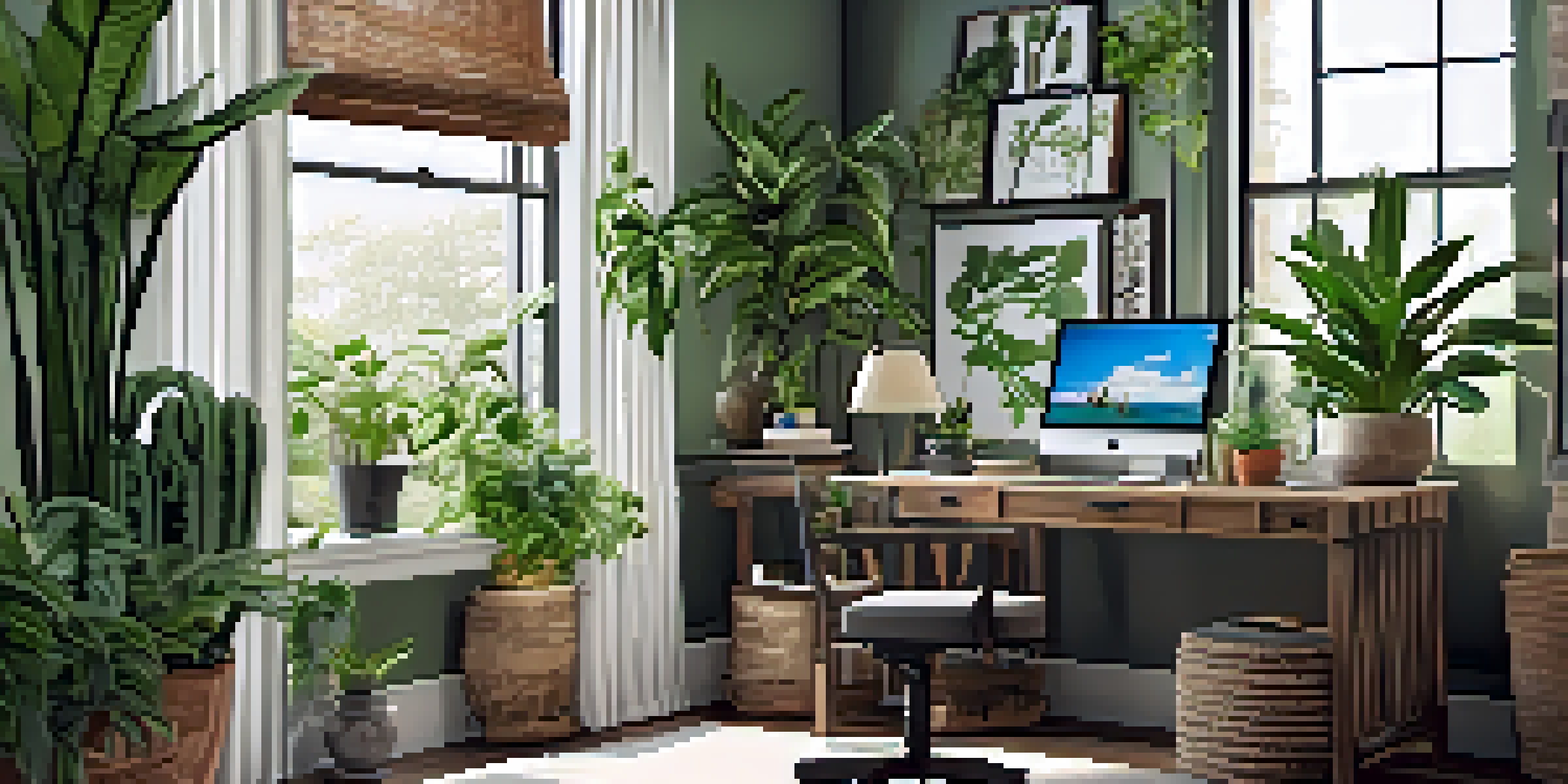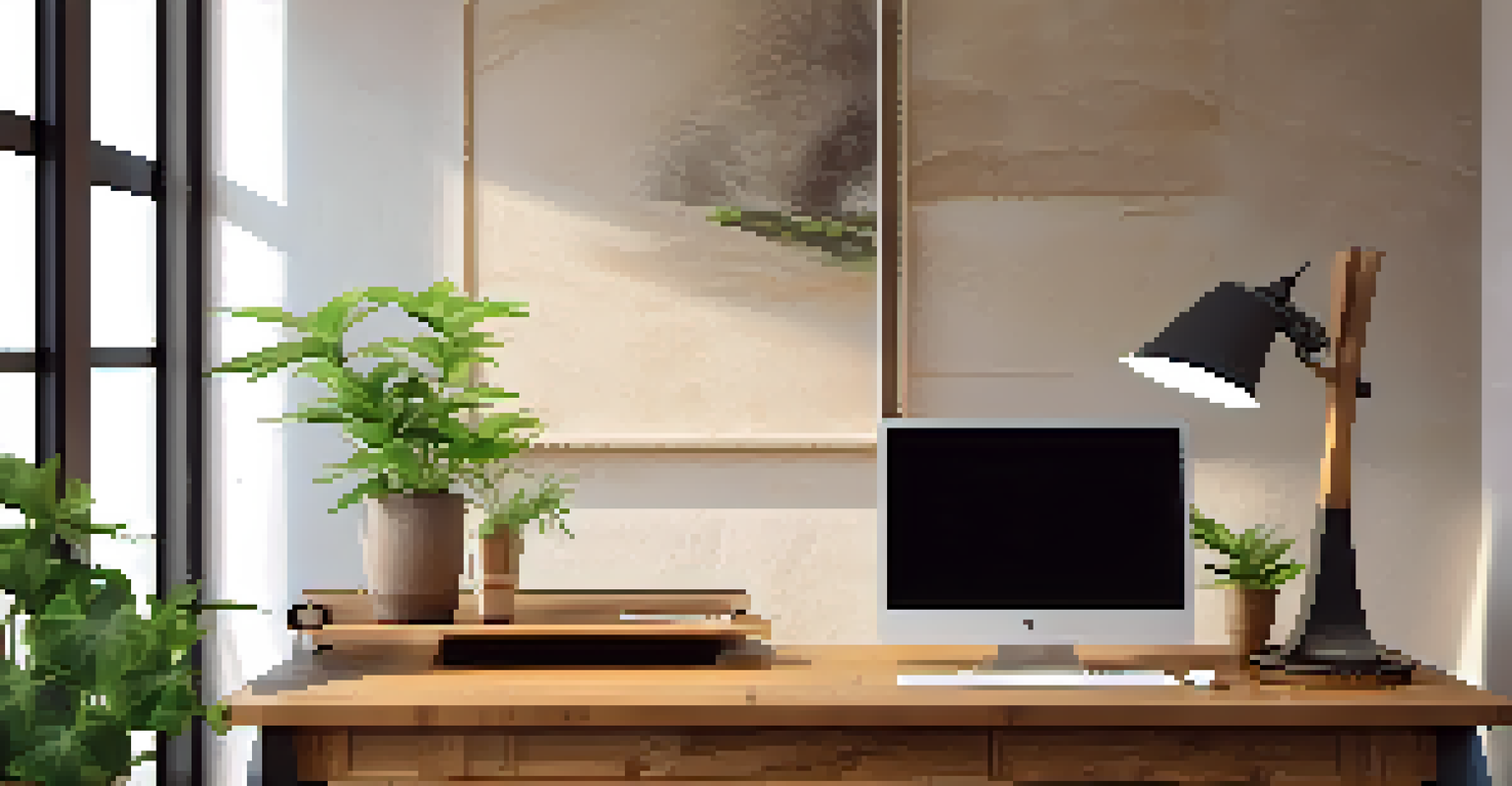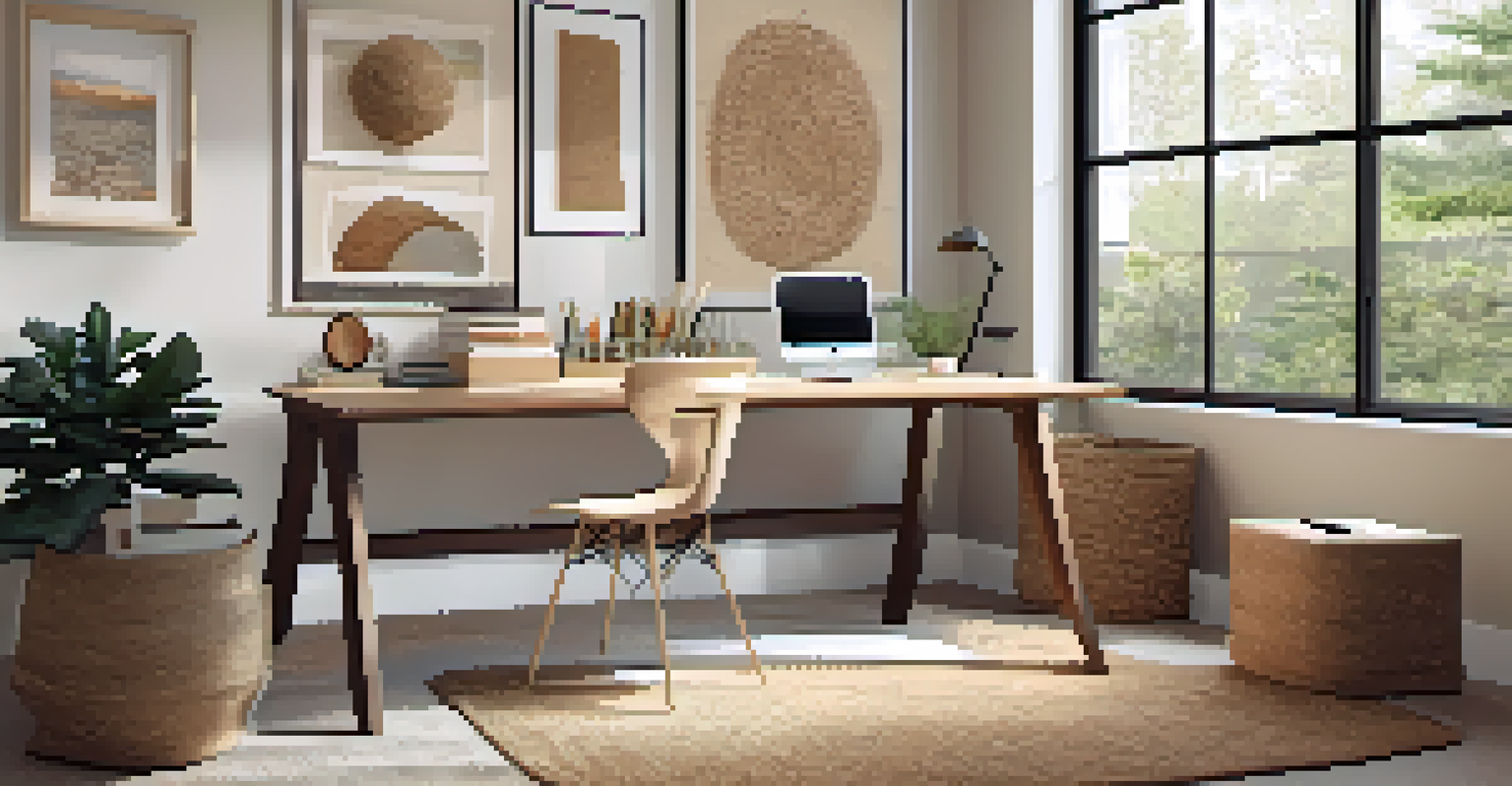Choosing the Right Green Materials for Your Home Office

Understanding Green Materials for Your Office
When it comes to creating a sustainable home office, understanding what constitutes 'green materials' is crucial. These materials are typically sourced from renewable resources, are non-toxic, and can be recycled or repurposed. By choosing such materials, not only do you reduce your environmental impact, but you also create a healthier workspace.
The greatest threat to our planet is the belief that someone else will save it.
Green materials can range from bamboo furniture to recycled metal and low-VOC (volatile organic compound) paints. VOCs are chemicals that can emit harmful gases into the air, so opting for low-VOC products helps improve indoor air quality. This is particularly important for a home office where you might spend long hours working.
Incorporating green materials into your office design not only supports sustainability but also contributes to a more inspiring and pleasant work environment. Imagine sitting in a beautifully crafted desk made from reclaimed wood, each scratch and knot telling a story of its own. It's about creating a space that feels good and does good.
Why Sustainability Matters in Home Office Design
Sustainability in home office design goes beyond just aesthetics; it's about creating a positive impact on the planet. With increasing awareness of environmental issues, more people are seeking ways to reduce their carbon footprint, even in their work environments. A sustainable office reflects a commitment to the planet and can inspire others to follow suit.

Moreover, using sustainable materials often means investing in higher quality, longer-lasting products. This can save you money in the long run, as you won't need to replace items as frequently. Think of it as a way to make a small change that leads to significant savings over time.
Choose Eco-Friendly Materials
Opting for sustainable materials like bamboo and reclaimed wood not only benefits the environment but also creates a healthier and more inspiring workspace.
Additionally, a sustainable workspace can enhance your productivity and creativity. Natural materials like wood and plants have been shown to boost mood and cognitive function. By surrounding yourself with these elements, you'll likely find yourself more energized and focused throughout your workday.
Identifying Eco-Friendly Furniture Options
When selecting furniture for your home office, look for pieces made from sustainable materials such as bamboo, reclaimed wood, or recycled metal. These materials are not only environmentally friendly but also stylish and unique. For instance, a desk made from reclaimed wood can add character, while bamboo is both lightweight and incredibly durable.
Sustainability is not a destination, it is a journey.
Consider also the manufacturing process of the furniture. Brands that focus on eco-friendly practices often use sustainable methods, such as water-based adhesives and finishes. This reduces the amount of harmful chemicals released into your home, creating a safer workspace.
Don't forget to check the certifications of the furniture. Look for labels like Forest Stewardship Council (FSC) or Global Recycled Standard (GRS) that indicate the product meets strict environmental standards. Choosing certified products ensures that you're making a responsible purchase.
Selecting Sustainable Décor for Your Office
Décor can breathe life into your home office, and choosing sustainable options can enhance its vibe. Consider incorporating items made from natural materials, such as cotton, wool, or jute. These materials are renewable and biodegradable, making them a great choice for eco-conscious decorators.
Art can also play a role in your sustainable office design. Look for local artists who use recycled materials or organic products. Not only will you support local talent, but you'll also end up with unique pieces that tell a story.
Invest in Quality Décor
Sustainable décor items made from natural and biodegradable materials enhance the aesthetic of your office while positively impacting the planet.
Further, adding plants to your office space can improve air quality and provide a calming influence. Opt for low-maintenance indoor plants, like snake plants or pothos, which thrive on minimal care while purifying the air. A touch of greenery can transform your workspace into a refreshing retreat.
Choosing Eco-Friendly Flooring Materials
Flooring is a significant aspect of any home office, and selecting eco-friendly options can make a big difference. Consider materials like cork, bamboo, or reclaimed wood, which are sustainable and often more durable than traditional options. Cork, in particular, is harvested from the bark of cork trees without harming the tree itself, making it an excellent renewable choice.
Additionally, if you're considering carpet, look for options made from recycled materials or natural fibers. Wool carpets, for example, are biodegradable and offer excellent durability, while synthetic carpets often contain harmful chemicals. Choosing the right flooring can enhance both the look and sustainability of your office.
Remember, proper installation and maintenance of flooring materials can also affect their sustainability. Opt for low-VOC adhesives and finishes to ensure a healthier indoor environment. This commitment to eco-friendly practices will contribute to a more sustainable home office overall.
Lighting: Energy-Efficient Choices for Your Workspace
Lighting is an essential element of any workspace, and choosing energy-efficient options can significantly reduce your environmental impact. LED bulbs are a popular choice because they consume less energy and last much longer than traditional incandescent bulbs. By switching to LEDs, you can cut down on both energy costs and waste.
Incorporating natural light into your home office design is another effective way to enhance your workspace sustainably. Position your desk near windows to take advantage of daylight, which can boost your mood and productivity. Adding sheer curtains can help diffuse bright sunlight while maintaining a bright atmosphere.
Utilize Energy-Efficient Lighting
Switching to energy-efficient lighting options like LED bulbs and maximizing natural light can significantly reduce your office's environmental footprint.
Consider also using light fixtures made from sustainable materials, such as recycled metal or responsibly sourced wood. Not only will these fixtures look stylish, but they also reinforce your commitment to sustainability. Your lighting choices can set the tone for your office, creating an inviting and eco-friendly environment.
Incorporating Technology Responsibly in Your Office
In the modern home office, technology plays a vital role, but it's important to choose devices that are energy-efficient and environmentally friendly. Look for electronics that have an Energy Star rating, which indicates they meet strict energy efficiency guidelines. This small step can lead to significant energy savings over time.
Consider also the lifecycle of your tech products. Opt for brands that prioritize sustainability in their production processes and offer recycling programs for outdated devices. This reduces electronic waste and ensures that your old gadgets are disposed of responsibly.

Lastly, remember to minimize the use of single-use items in your office. Instead of disposable pens or paper, invest in reusable alternatives. This practice not only helps the environment but can also create a more organized and aesthetically pleasing workspace.